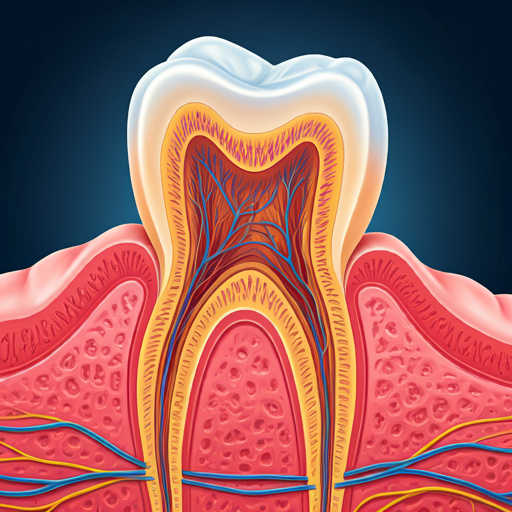This guide will provide detailed information to increase your understanding of the root canal procedure, its importance, and what to expect before, during, and after the treatment. Root canal treatment is a common dental procedure designed to save a tooth that is severely infected or damaged. Despite its reputation, modern root canal treatments are generally pain-free and highly effective.

What is a Root Canal?
A root canal is a dental procedure that involves the removal of the infected or inflamed pulp from the inside of a tooth. The pulp is the soft tissue containing nerves, blood vessels, and connective tissue. When it becomes infected or damaged, it can cause severe pain and lead to abscess formation if left untreated. The procedure aims to clean and disinfect the root canals, then fill and seal them to prevent further infection.
Signs You Might Need a Root Canal
There are several symptoms that may indicate the need for a root canal treatment:
- Persistent Tooth Pain: Continuous pain that doesn’t go away, especially when chewing or applying pressure.
- Sensitivity to Hot and Cold: Prolonged sensitivity to hot or cold temperatures, even after the source is removed.
- Swollen Gums: Swelling and tenderness in the gums near the affected tooth.
- Discoloration: Darkening or discoloration of the affected tooth.
- Pimples on the Gums: Presence of pimples or boils on the gums, which may indicate an abscess.
The Root Canal Procedure
Understanding the steps involved in a root canal procedure can help alleviate any anxiety or fear about the treatment.
Initial Examination and Diagnosis
The process begins with a thorough examination by the dentist or endodontist. This includes:
- X-Rays: Taking X-rays to assess the extent of the infection and examine the root canals.
- Anesthesia: Administering local anesthesia to numb the affected area and ensure a pain-free procedure.
Accessing the Infected Pulp
Once the tooth is numb, the dentist will:
- Create an Opening: Drill an opening in the crown of the tooth to access the infected pulp.
- Remove the Pulp: Use specialized instruments to remove the infected or damaged pulp from the pulp chamber and root canals.
Cleaning and Shaping the Canals
After removing the pulp, the dentist will:
- Clean the Canals: Thoroughly clean and disinfect the root canals to remove any remaining bacteria and debris.
- Shape the Canals: Shape the canals to prepare them for filling, ensuring they are smooth and free of debris.
Filling the Canals
Once the canals are cleaned and shaped:
- Filling Material: The dentist fills the canals with a biocompatible material, usually gutta-percha, to seal them.
- Temporary Filling: Place a temporary filling to close the opening in the tooth until a permanent restoration can be applied.
Post-Procedure Care
Proper care after a root canal is crucial to ensure successful healing and prevent complications.
- Pain Management: Over-the-counter pain relievers like ibuprofen or acetaminophen can help manage any discomfort after the procedure.
- Avoid Certain Foods: Avoid chewing on the treated tooth until a permanent restoration is in place.
- Oral Hygiene: Maintain good oral hygiene by brushing and flossing regularly, but be gentle around the treated area.
Importance of Follow-Up and Restoration
After the initial treatment, a follow-up visit is usually necessary to complete the restoration of the tooth:
- Permanent Restoration: A crown or filling is placed on the tooth to restore its function and appearance. This step is crucial to protect the treated tooth from further damage.
- Regular Check-Ups: Regular dental check-ups ensure the tooth remains healthy and free from further infection.
Myths and Misconceptions About Root Canals
Root canals often suffer from misconceptions that can cause unnecessary fear. Some common myths include:
- Root Canals are Painful: With modern techniques and anesthesia, root canals are no more painful than getting a filling.
- It’s Better to Extract the Tooth: Saving the natural tooth with a root canal is preferable to extraction and can prevent other dental problems.
Understanding Root Canal Treatment: Conclusion
Root canal treatment is a highly effective procedure for saving teeth that would otherwise need to be extracted due to severe infection or damage. Understanding the process, the importance of post-procedure care, and dispelling common myths can help patients feel more comfortable and informed about the treatment.
For expert root canal treatment and comprehensive dental care, consult with the specialist at Bryant Park Endodontics. Dr. Young Bui’s extensive experience and patient-centered approach ensure high-quality care and optimal results.
Bryant Park Endodontics
Young Bui, DDS
30 East 40th Street
New York, NY 10016
646-205-3045
For more information about Dr. Bui and his practice, visit Bryant Park Endodontics.
